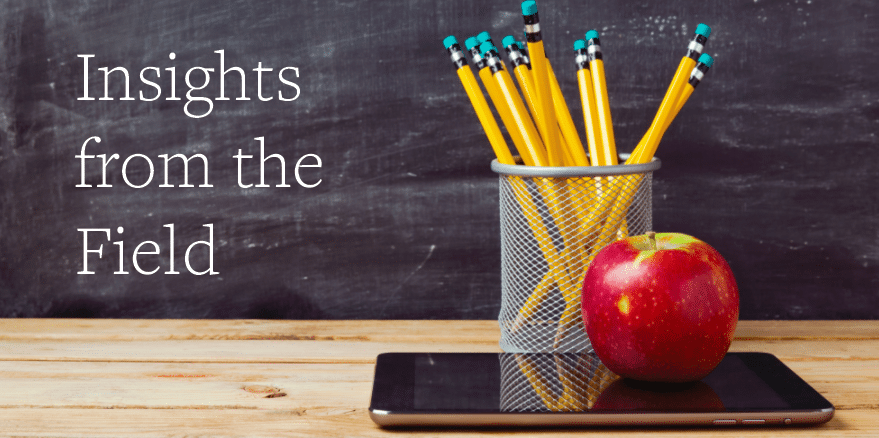In this post, I share an excerpt from a recent interview with Chris Walter, a blended-learning math and science teacher at Innovations Early College High School in the Salt Lake City School District in Utah.
Innovations operates a Flex model of blended learning in which students access all the assignments and learning resources for most of their courses online. In this model, teachers and administrators teach students how to plan their study time, self-direct their learning, and seek out help from peers or teachers according to their individual needs. Accordingly, at Innovations, students do not follow a bell schedule. Instead, they move fluidly between classrooms at their own discretion, seeking out the study environments and supports that best meet their learning needs at any particular moment. The school also assigns each student a mentor teacher that meets individually with that student at least once a week; mentor teachers help students figure out how to work toward their academic goals and ensure that students are making progress toward graduation and college entrance.
In this interview, Chris explains how Innovation’s blended-learning environment has drastically changed his role as a teacher. But, despite the fact that Chris no longer spends his days planning and delivering whole-class lessons, his role as a content-expert teacher remains critical to Innovations’ instructional model.
Thomas: How has blended learning changed your practices?
Chris: Blended learning has improved my use of best practices as a teacher. Now, I have more opportunities to work individually and with small groups of students. I find myself communicating clearer instructions to students because I am not present to answer questions if they are working in another classroom or at home. I also give more specific feedback to students so that they know what areas to improve on.
The technology I use for blended learning is also highly useful for simulations. I can’t bring radioactive samples into my classroom for students to collect data about. However, simulations can do this for me. I use technology to do several simulations where the students can practice inquiry-based learning by experimenting themselves, collecting their own data, and drawing their own conclusions.
One of the biggest struggles for me is giving away a lot of control. I am no longer responsible for making each student do my assigned task at the time appointed by me. Instead, I’ve needed to shift to identifying and helping the students that need additional support. Another aspect of giving power to students is that they will make poor choices once in a while and have to learn from the consequences. Watching a student fail is never an easy prospect; however, watching them change and correct their failures is very rewarding, and our model gives students the power to do this.
Blended learning has increased the time I have available to work with other teachers. We communicate several times a day about the needs and goals of specific students and what we can do to support those students. We meet regularly to plan cross-curricular units and activities because across the team we have more understanding of students’ weaknesses and how to address them.
Thomas: How has blended learning changed your relationships with students?
Chris: At Innovations, students are assigned a mentor teacher. They work with their mentor to stay on pace with their courses and plan how they will complete their various assignments. Every week, the student meets with their mentor to review progress and set new goals.
In a traditional environment, it was really difficult to know my students. I could know their names and faces, and I could know how they’re doing in my class; however, it was not feasible to have many open conversations with individual students in the context of a traditional class. In our blended model, because neither my schedule nor my students’ schedules are anywhere near as rigid, we have these opportunities to really get to know the strengths and weaknesses of the students on an individual basis.
Because of the nature of our blended-learning model, I care much more about my students. I am no longer able to just say, “Oh, they didn’t learn because they didn’t do the work. That is their problem.” I want to know why they didn’t do their work. I want to know what outside influences are getting in their way. I want to know what they are going to do to fix their mistakes. And I finally have time to ask these questions without ignoring the other 35 students in the room.
Overall, I would not say that my job has gotten easier. I could argue that it has become more difficult; however, because of the ability to interact more personally with the students, blended learning is much more rewarding. I am more empowered to make a positive impact on my students’ education and am able to see more clearly the difference I am making.
For more blended-learning teacher interviews, see:
- Blended learning can help students take ownership of their learning
- Blended learning enables meaningful personal interaction
- Blended learning can enable teachers to focus on cognitive skills
- Insights from a blended-learning teacher



